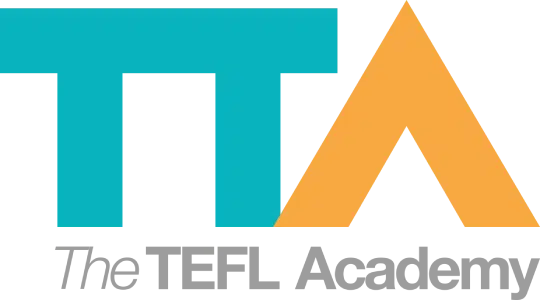Requirements And Hiring Process To Become An ALT In Spain
Table of Contents
- Introduction
- What do I need to apply?
- Application process
- Visa process
- Other considerations
- Choosing your location
- Timeline and start dates
So you’ve set your sights on a top TEFL destination: Spain! Whether you’re looking forward to basking in the sunshine on Valencia’s beaches or tapping into Seville’s rich history, or even the laid-back culture of afternoon siestas, teaching English in Spain offers an exciting opportunity to immerse yourself in a dynamic and rewarding environment.
But before you’re helping learners master “th” sounds, you’ll need to tick a few admin boxes.
TTA alumna Lauren worked as an Assistant Language Teacher (ALT) in Seville, Spain.

She says: The best ALTs are flexible, enthusiastic, and genuinely curious about Spanish culture. A friendly face helps build professional relationships. A firm but approachable teacher creates a positive classroom where students can thrive and respect boundaries. Inject energy into your lessons to inspire students and hold their attention.
Think you’ve got what it takes? Let’s look at everything YOU need to know to land an ALT job in España.
What do I need to apply?
- Be a native-level English speaker OR have a C2 English Certificate or equivalent if you’re from Bulgaria, China, Denmark, Finland, Hungary, Norway, Poland, Netherlands, Czechia, Singapore, or Sweden
- A valid passport from a participating country (i.e. a country that has signed a Memorandum of Understanding with Spain)
- A university OR college degree OR be enrolled as a second-year student
- Be in good health
- Be under 60 (under 36 in the Valencia region)
- Have a clean Certificate of Sexual Offences
Additional non-compulsory requirements:
- A TEFL, CELTA or education-related qualification
- Previous teaching experience
- Basic Spanish skills
- Experience living abroad
Read more: How To Learn The Local Language
🚫 Spanish passport holders are not eligible to be an ALT in Spain.
The application process
Ways to apply
Lauren: There are multiple ways to apply to be an ALT in Spain. Those in the UK typically apply through the British Council. You can also apply through third-party programs like CIEE or private language academies. North Americans typically apply through NALCAP.
Read more: What is NALCAP? Become An English Language Assistant
Applying directly through the Spanish Ministry
If you’d prefer to apply independently, you can do so through the Spanish Ministry of Education’s website.
Lauren: Navigate to the Teaching Abroad tab and choose “Calls for foreigners” and then “Foreign language assistants in Spain” from the available options. This is where you will find the necessary application steps.
The application period usually opens in January or February and closes around early April.
Applications are online via the Profex 2 portal for everyone except UK applicants, who go through matching meetings. To apply, you’ll need to register and complete the application form.
Required documents:
- Signed Statement of Purpose
- Letter of recommendation written by a professor or employer
- Official transcript or copy of degree
Tip: Download a PDF version of your application in the event this information is requested.
Application updates are sent via the Profex 2 portal.
- N revision – Your application is under review.
- Admitida – Your application meets requirements and awaits placement
❗ Admitida does not mean acceptance.
Lauren: Once you’ve been accepted as an ALT in Spain, there’s a bit more paperwork to tackle before you can pack your bags.
Visa process overview
Lauren: Once you’ve secured a placement, the next step is applying for a visa, which allows you to legally work as an ALT in Spain.
Most programs will provide you with an official placement letter (nombramiento), which you’ll need to submit as part of your application at the Spanish consulate in your home country.
The exact requirements can vary slightly depending on your nationality and consulate, so it’s a good idea to check with your local consulate well in advance.
To apply for your visa and sort out residency, you’ll need:
- an official nombramiento letter,
- a completed visa application form with proof of payment, and
- a medical certificate confirming you’re free from any public health risks.
Visa processing can take several weeks, so aim to submit your documents as early as possible once you’ve received your placement.
Other considerations
Lauren: If you’re staying for more than 180 days, you’ll also need a criminal background check, apostilled and translated if required.
Some consulates may ask for proof of funds to show you can support yourself, and, in some cases, you may also need to provide proof of accommodation in Spain.
It might feel like a lot, but getting everything sorted ahead of time makes the rest of the process much smoother.
Read more: What Do You Need To Know About Moving To Spain?

Choosing your location
Lauren: During the application process, you’ll be able to select three preferred locations, but placements are not guaranteed. Locations are grouped into three categories, A, B, and C, and you’ll need to choose one from each.
It’s worth thinking carefully about the kind of lifestyle you want to have while teaching in Spain, as urban and rural placements each offer a unique experience.
Here’s a quick breakdown of urban versus rural locations:
- Urban ALTs experience longer commutes but have more access to social activities, tutoring jobs, and public transport.
- Rural ALTs often carpool with teachers, work in smaller schools, enjoy a lower cost of living, and may have a closer-knit teaching community.
If you’re not fussed about location, you may indicate “no preference” on your application and let fate decide.
Timeline and start dates
Lauren: Placement confirmation happens around June to July. You must accept placement within three days of notification. UK applicants receive their placements about a month after their matching meetings.
The program follows the school calendar, running from 1 October to 31 May, except in Madrid, where placements last until 30 June.
You must start the program on the 1st or 15th of each month, except for October, where you can begin between 1-4 October or on 15 October.
The entire process takes about six to nine months.
Ready to swap your rainy commute or cubicle view for buzzing Spanish plazas and sun-kissed olive groves? The ALT route may take some paperwork and patience, but the lure of Spain’s vibrant culture, stunning landscapes, and tasty cuisine is undeniable. Beat the admin and, before you know it, you’ll be waking up to café con leche mornings and walking to the rhythm of flamenco in the streets.
Read More: What Is An ALT In Spain?
Table of Contents
- Introduction
- What do I need to apply?
- Application process
- Visa process
- Other considerations
- Choosing your location
- Timeline and start dates
So you’ve set your sights on a top TEFL destination: Spain! Whether you’re looking forward to basking in the sunshine on Valencia’s beaches or tapping into Seville’s rich history, or even the laid-back culture of afternoon siestas, teaching English in Spain offers an exciting opportunity to immerse yourself in a dynamic and rewarding environment.
But before you’re helping learners master “th” sounds, you’ll need to tick a few admin boxes.
TTA alumna Lauren worked as an Assistant Language Teacher (ALT) in Seville, Spain.

She says: The best ALTs are flexible, enthusiastic, and genuinely curious about Spanish culture. A friendly face helps build professional relationships. A firm but approachable teacher creates a positive classroom where students can thrive and respect boundaries. Inject energy into your lessons to inspire students and hold their attention.
Think you’ve got what it takes? Let’s look at everything YOU need to know to land an ALT job in España.
What do I need to apply?
- Be a native-level English speaker OR have a C2 English Certificate or equivalent if you’re from Bulgaria, China, Denmark, Finland, Hungary, Norway, Poland, Netherlands, Czechia, Singapore, or Sweden
- A valid passport from a participating country (i.e. a country that has signed a Memorandum of Understanding with Spain)
- A university OR college degree OR be enrolled as a second-year student
- Be in good health
- Be under 60 (under 36 in the Valencia region)
- Have a clean Certificate of Sexual Offences
Additional non-compulsory requirements:
- A TEFL, CELTA or education-related qualification
- Previous teaching experience
- Basic Spanish skills
- Experience living abroad
Read more: How To Learn The Local Language
🚫 Spanish passport holders are not eligible to be an ALT in Spain.
The application process
Ways to apply
Lauren: There are multiple ways to apply to be an ALT in Spain. Those in the UK typically apply through the British Council. You can also apply through third-party programs like CIEE or private language academies. North Americans typically apply through NALCAP.
Read more: What is NALCAP? Become An English Language Assistant
Applying directly through the Spanish Ministry
If you’d prefer to apply independently, you can do so through the Spanish Ministry of Education’s website.
Lauren: Navigate to the Teaching Abroad tab and choose “Calls for foreigners” and then “Foreign language assistants in Spain” from the available options. This is where you will find the necessary application steps.
The application period usually opens in January or February and closes around early April.
Applications are online via the Profex 2 portal for everyone except UK applicants, who go through matching meetings. To apply, you’ll need to register and complete the application form.
Required documents:
- Signed Statement of Purpose
- Letter of recommendation written by a professor or employer
- Official transcript or copy of degree
Tip: Download a PDF version of your application in the event this information is requested.
Application updates are sent via the Profex 2 portal.
- N revision – Your application is under review.
- Admitida – Your application meets requirements and awaits placement
❗ Admitida does not mean acceptance.
Lauren: Once you’ve been accepted as an ALT in Spain, there’s a bit more paperwork to tackle before you can pack your bags.
Visa process overview
Lauren: Once you’ve secured a placement, the next step is applying for a visa, which allows you to legally work as an ALT in Spain.
Most programs will provide you with an official placement letter (nombramiento), which you’ll need to submit as part of your application at the Spanish consulate in your home country.
The exact requirements can vary slightly depending on your nationality and consulate, so it’s a good idea to check with your local consulate well in advance.
To apply for your visa and sort out residency, you’ll need:
- an official nombramiento letter,
- a completed visa application form with proof of payment, and
- a medical certificate confirming you’re free from any public health risks.
Visa processing can take several weeks, so aim to submit your documents as early as possible once you’ve received your placement.
Other considerations
Lauren: If you’re staying for more than 180 days, you’ll also need a criminal background check, apostilled and translated if required.
Some consulates may ask for proof of funds to show you can support yourself, and, in some cases, you may also need to provide proof of accommodation in Spain.
It might feel like a lot, but getting everything sorted ahead of time makes the rest of the process much smoother.
Read more: What Do You Need To Know About Moving To Spain?

Choosing your location
Lauren: During the application process, you’ll be able to select three preferred locations, but placements are not guaranteed. Locations are grouped into three categories, A, B, and C, and you’ll need to choose one from each.
It’s worth thinking carefully about the kind of lifestyle you want to have while teaching in Spain, as urban and rural placements each offer a unique experience.
Here’s a quick breakdown of urban versus rural locations:
- Urban ALTs experience longer commutes but have more access to social activities, tutoring jobs, and public transport.
- Rural ALTs often carpool with teachers, work in smaller schools, enjoy a lower cost of living, and may have a closer-knit teaching community.
If you’re not fussed about location, you may indicate “no preference” on your application and let fate decide.
Timeline and start dates
Lauren: Placement confirmation happens around June to July. You must accept placement within three days of notification. UK applicants receive their placements about a month after their matching meetings.
The program follows the school calendar, running from 1 October to 31 May, except in Madrid, where placements last until 30 June.
You must start the program on the 1st or 15th of each month, except for October, where you can begin between 1-4 October or on 15 October.
The entire process takes about six to nine months.
Ready to swap your rainy commute or cubicle view for buzzing Spanish plazas and sun-kissed olive groves? The ALT route may take some paperwork and patience, but the lure of Spain’s vibrant culture, stunning landscapes, and tasty cuisine is undeniable. Beat the admin and, before you know it, you’ll be waking up to café con leche mornings and walking to the rhythm of flamenco in the streets.
Read More: What Is An ALT In Spain?
 United States
US
United States
US








